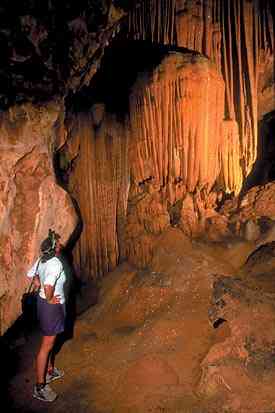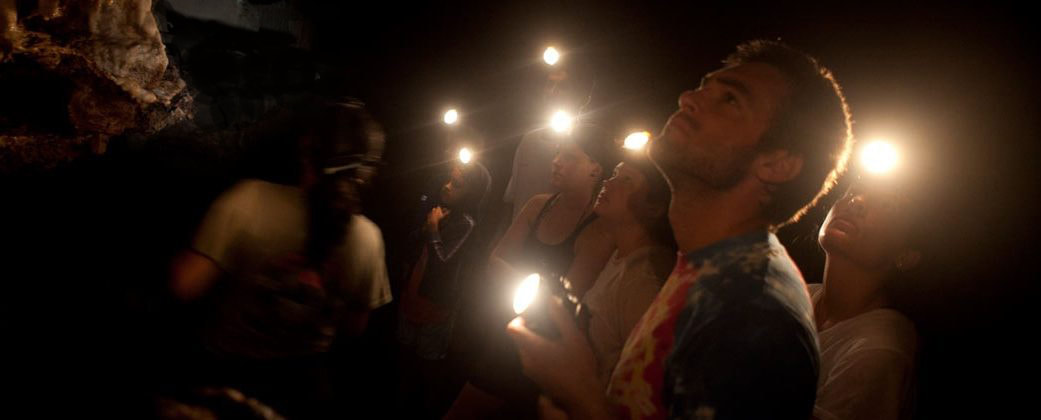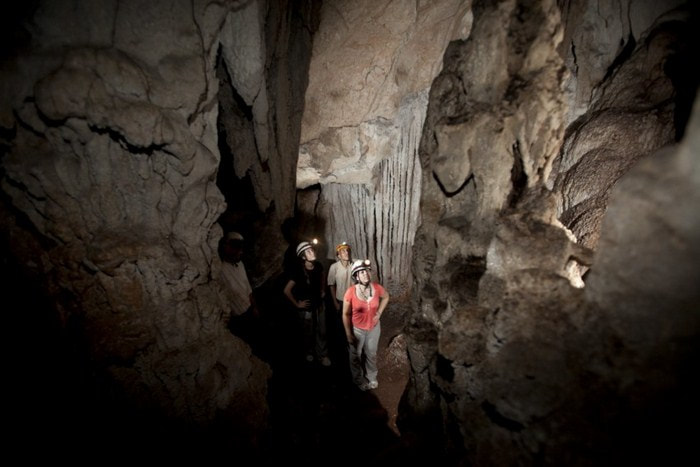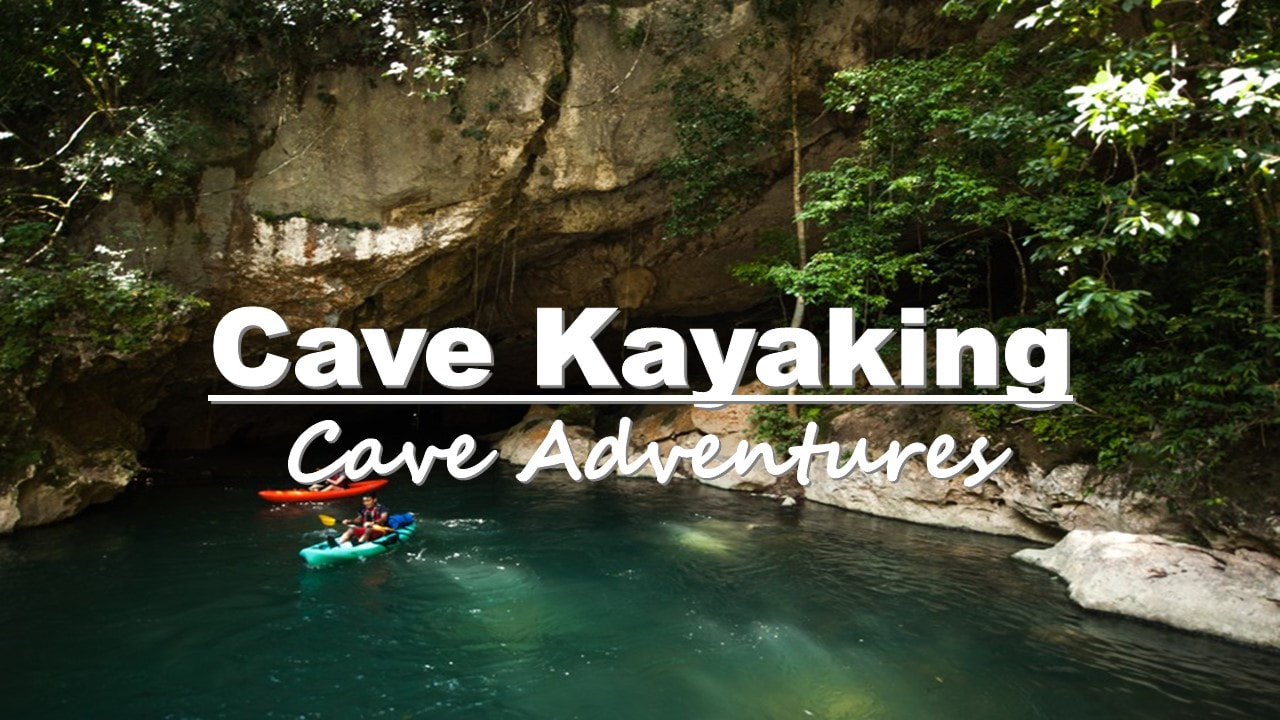Belize has the most extensive cave system in all of Central America
|
The Caves Branch Cave is one of several subterranean sites that were carved out of the limestone foothills of the Maya Mountains by the very active Caves Branch River. Our country is unique in that it has the largest cave system in Central America and the Cave’s Branch is part of this natural wonder, most as yet unexplored or mapped.
The site provides us with an excellent example of the erosive power of water, and the natural wonders of the country. Geological research informs us that the cave took several hundred thousand years to form. Archaeological investigations note that the ancient Maya visited the site to conduct important rituals. Today’s modern visitor enjoys a unique opportunity to observe the awesome geological features of the site, and to ponder the nature of prehistoric human utilization. Millions of years ago, most of the landmass of Belize was covered by a broad, shallow tropical sea. One of the major rock types deposited in this sea was limestone, a rock formed of calcium carbonate. This limestone can have its origin either from biological materials like corals and mollusks, or in some cases the limestone can be precipitated directly from the seawater. Geology of The Caves Branch Cave System The Cave’s Branch River is a scenic and popular bathing spot for locals and tourists.Like the modern Gulf of Mexico, this shallow Cretaceous sea was occasionally subject to violent storms that disturbed the floor of the sea. These storms created a distinctive type of limestone rock called a breccia. Breccia is a rock that is made up of angular pieces of other rocks. In the case of the rock at Caves Branch Cave, the angular pieces of rock are called “rip up clasts.” These are pieces of rock several inches on a side that were torn up and jumbled about before the clasts or pieces had a chance to harden. The distinctive rock is very easy to dissolve. Almost all limestone is soluble in a dilute solution of carbonic acid. Millions of years later, these Cretaceous limestone formations were uplifted on the northern flanks of the Maya Mountains. The central core of the Maya Mountains is formed of older crystalline volcanic and metamorphic rocks. After these mountains were uplifted, water would run off the crystalline rocks, and come into the outcrop of the Cretaceous limestone. As the rainwater fell through the atmosphere, it would react with carbon dioxide in the atmosphere. After the rain fell into the soil on the crest of the Maya Mountains, the water would absorb additional carbon dioxide from decaying plant material. The rainwater turns into a weak acid, which then reacts with the limestone rock. The acidic rainwater enters the limestone rock, and travels along zones of weakness called joints. Joints are microscopic cracks in the rock that are produced by mountain building processes (tectonics) and by earth tides (similar to oceanic tides). Water finds it easier to dissolve into the limestone than to flow across the limestone outcrop. This process of solution produces a distinctive type of landscape characterized by caves, sinkholes, and a lack of surface drainage. This landscape is called a Karst landscape, named for a region in former Yugoslavia. These processes of solution are accelerated in a tropical climate, so Belize is an example of a tropical Karst environment. Another view of the Caves Branch River in central Belize.Karst landscapes evolve through various stages which can be called Youth, Middle Age, and Old Age. Caves Branch is a part of an Old Age Karst landscape. One of the distinctive features of an old age landscape is a feature called a Karst window. As caves come to intersect with the land surface, they begin to collapse. This means that caves gradually lose their roofs. An underground river like the Sibun or Caves Branch will run intermittently through caves and above ground. Eventually, the caves will completely collapse, and the caves will be replaced by a valley without a roof. Belize’s Caves Branch Caves have a series of four cave passages that connect a series of Karst windows. The caves are what are known as “sewer” passages. In places, there are large collapsed rooms, which make the cave passage size much larger. This means that the caves have a combination of water filled sewer passages, and side chambers that have their origin in collapse. As the caves collapse and are destroyed by erosion, a single cave that was once very long becomes divided into a series of individual shorter caves. Many side passages have become separate caves like the Crystal Cave. As the cave is destroyed, nature divides it into a series of separate short caves. The cave stream is still an active waterway. This means that in the rainy season in the summer, and the hurricane season in the fall, the cave can completely fill with water. This is evidenced by large logs which are jammed into the roof of the cave ceiling. The cave stream also carries a great deal of sand and cobble-sized gravel. Some of this river gravel has its origin in the crystalline rocks of the central Maya Mountains. The main component of these river gravels is from chert or silica nodules that are part of the original limestone rock. These underground rivers behave much like surface streams. This means that the river channels have a meander system similar to a surface river. The length of the meander is related to the width of the river and the gradient. Meandering rivers on the surface can change their course, and create what are known as high water levels, or abandoned meanders. These are sometimes called oxbow lakes. Another feature of the river walls is scallops which are related to maximum velocity of the river. The gradient of the river also varies, just as the gradient of a surface stream will vary. The usual cause for gradient changes is a change in the geology. There appears to be a fault under the second Karst window. This fault has a throw of about 20 feet, so the river becomes steeper on the downstream side of the fault. As the limestone dissolves, it is redeposited in the caves as flowstone and dripstone. Caves Branch is full of stalagmites, stalactites, and other types of cave formations. The formations that are near to the water level are often redissolved during the higher water levels. This is a reminder that caves have a life of their own. The caves have a youth, they grow old, and finally they die, as they are eroded away. Caves Branch Cave is an excellent example of a mature Karst landscape, and the site reminds us that nothing, in geology or life, is forever. Help us to protect this awesome natural wonder. |






































































